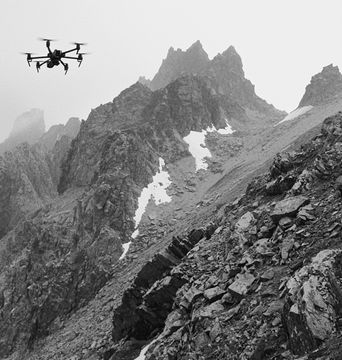VOLUNTEERS DEVELOP BREAKTHROUGH DRONE TECHNOLOGY TO PINPOINT MISSING HIKERS, UTILIZED IN TRAGIC HILLWALKING INCIDENT

On a gloomy September morning in 2023, amidst the spectacular vistas of the Scottish Highlands, a 56-year-old forensic psychologist and an avid hillwalker, Charlie Kelly, ventured on what was to be his last hike. Despite an extensive search operation by the local Mountain Rescue team, Kelly was not found that night or any subsequent nights. The only trace of him was his abandoned backpack, a grim reminder of the treacherous terrain's unpredictability. Kelly’s sudden disappearance was not found until six weeks later, utilizing a groundbreaking drone software technology developed by two volunteers from a English Mountain Rescue team.
This novel technology, formulated by two versatile volunteers from England, leverages drone piloting and image analysis software to work as an efficient eye in the sky. The software navigates drones in a systematic pattern to capture comprehensive ground imagery, calculates grid reference for each pixel on an image, and smartly analyzes these images to identify unusual color clusters. Within an hour of using their technology, they managed to locate Kelly's body. Sadly, he had succumbed to the injuries sustained in a fall.
The incident is a powerful testimony to both the adversities faced by Mountain Rescue teams and the untapped potential of drone technology for more efficient and extensive search operations. It's a somber reminder of the increasing frequency of call-outs and the crucial need for innovative interventions to assist in these often perilous rescue missions.
As the world steps into an era where technological advancements stride hand-in-hand with everyday affairs, the potential use of drone technology for search and rescue operations has offered a beacon of hope. Currently, the global market for search and rescue drones stands at an impressive $4 billion.
However, the technology used to locate Kelly will not be part of this growing market. The software developers emphatically expressed that their aim wasn't to commercialize the product. Instead, their primary motive lies in problem-solving and harnessing the potential of their innovation to aid others in dire straits.
Kelly's story casts an altogether different light on the way technology can and potentially will, influence the future of rescue operations. It opens up a new chapter in which drones could become an integral part of any search and rescue team. While the path to commercialization remains closed for now, its demonstrated success will inevitably encourage other innovative minds to explore this avenue in the pursuit of better, more efficient rescue operations.
Far from exploiting the situation, the English duo journeyed to Scotland for a noble cause, their empathy beautifully converging with their innovative edge. And while their technology could not ensure a happy ending for Kelly, it undoubtedly paves the way to a future where effective rescue efforts align with the rapid pace of technological advancement, promising a brighter tomorrow for seekers and wanderers like Kelly.
The future of search and rescue operations stands on the cusp of major technological advancements, fueled by such inspiring stories of human empathy and ingenuity. Unquestionably, we’re standing on the precipice of a digital revolution that could completely transform the landscape of search and rescue missions, potentially saving more lives and bringing closure to countless families. With drone technology taking center stage, we can anticipate a future where no hillwalker gets lost in the wilderness, and no mountain is too high or deep to search.